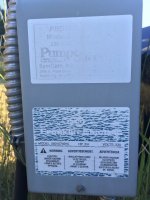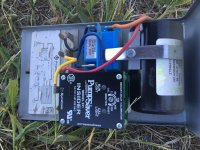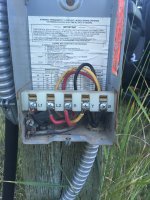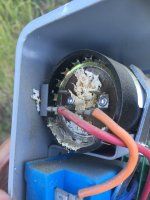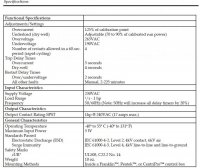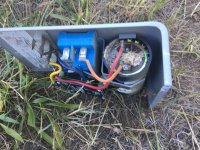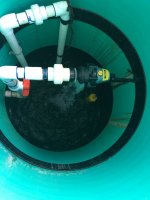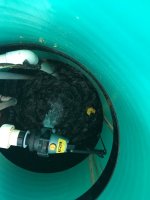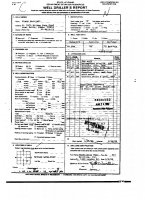I have an 80 foot deep well that has never run so low in 10 years that I have been here. It feeds into a 4000 gal cistern that is then pumped into the house. What is the process of evaluating water pumping capacity, not just gallons per minute but also total draw down?
This well has an old pumptec or some other pump protection device that has no lights to indicate function. It has a small air tank as well. Ahead of the pressure switch in the well casing there is a CSV as well.
1. From what I have read here it may be that the pumptec is not working well with the CSV or just not working...??
2. The pressure switch could be going out, not likely though.
3. The well is running low on water!! Possible and what needs to be determined.
Last night I opened the cistern lid, removed the valve regulating the water into the cistern, reset the breaker to the well pump at the breaker panel which turned the pump on.(I do not know how long it was off) This pumped only about 10-15 gallons of water. (not measured, just eye-balled). Then it stopped flowing.
How do I test the well capacity eliminating the parts in the circuit as a possible issue? I would be very happy if it simply meant that I needed a new Cycle Sensor to replace the old (+10 years) pumptec.
I could shut off the breaker for an hour, turn it back on and watch and measure the water coming out before it stops flowing. doing the math it would give me the amount of water per day possibly.
Any advice would be helpful.
This well has an old pumptec or some other pump protection device that has no lights to indicate function. It has a small air tank as well. Ahead of the pressure switch in the well casing there is a CSV as well.
1. From what I have read here it may be that the pumptec is not working well with the CSV or just not working...??
2. The pressure switch could be going out, not likely though.
3. The well is running low on water!! Possible and what needs to be determined.
Last night I opened the cistern lid, removed the valve regulating the water into the cistern, reset the breaker to the well pump at the breaker panel which turned the pump on.(I do not know how long it was off) This pumped only about 10-15 gallons of water. (not measured, just eye-balled). Then it stopped flowing.
How do I test the well capacity eliminating the parts in the circuit as a possible issue? I would be very happy if it simply meant that I needed a new Cycle Sensor to replace the old (+10 years) pumptec.
I could shut off the breaker for an hour, turn it back on and watch and measure the water coming out before it stops flowing. doing the math it would give me the amount of water per day possibly.
Any advice would be helpful.

